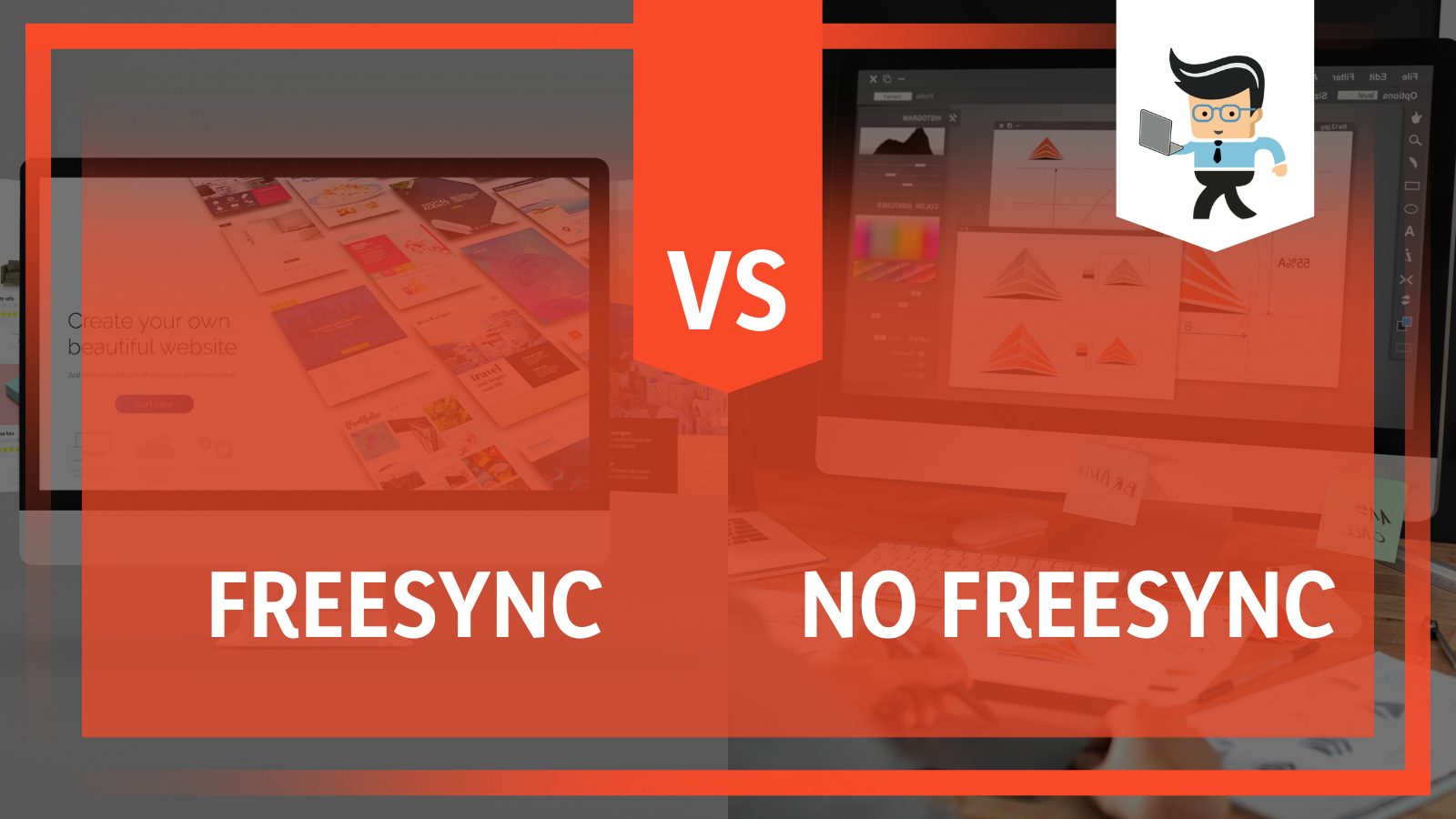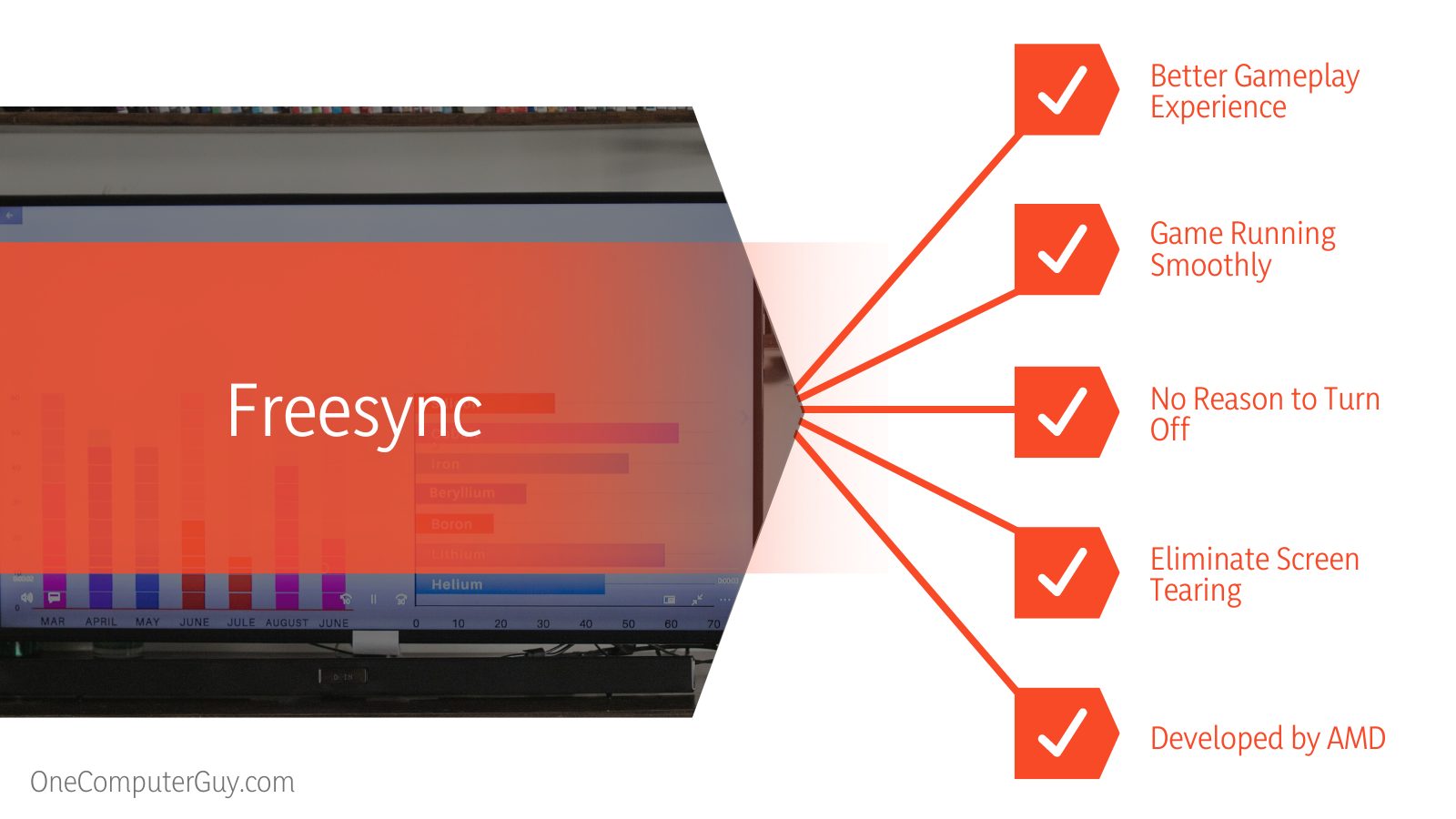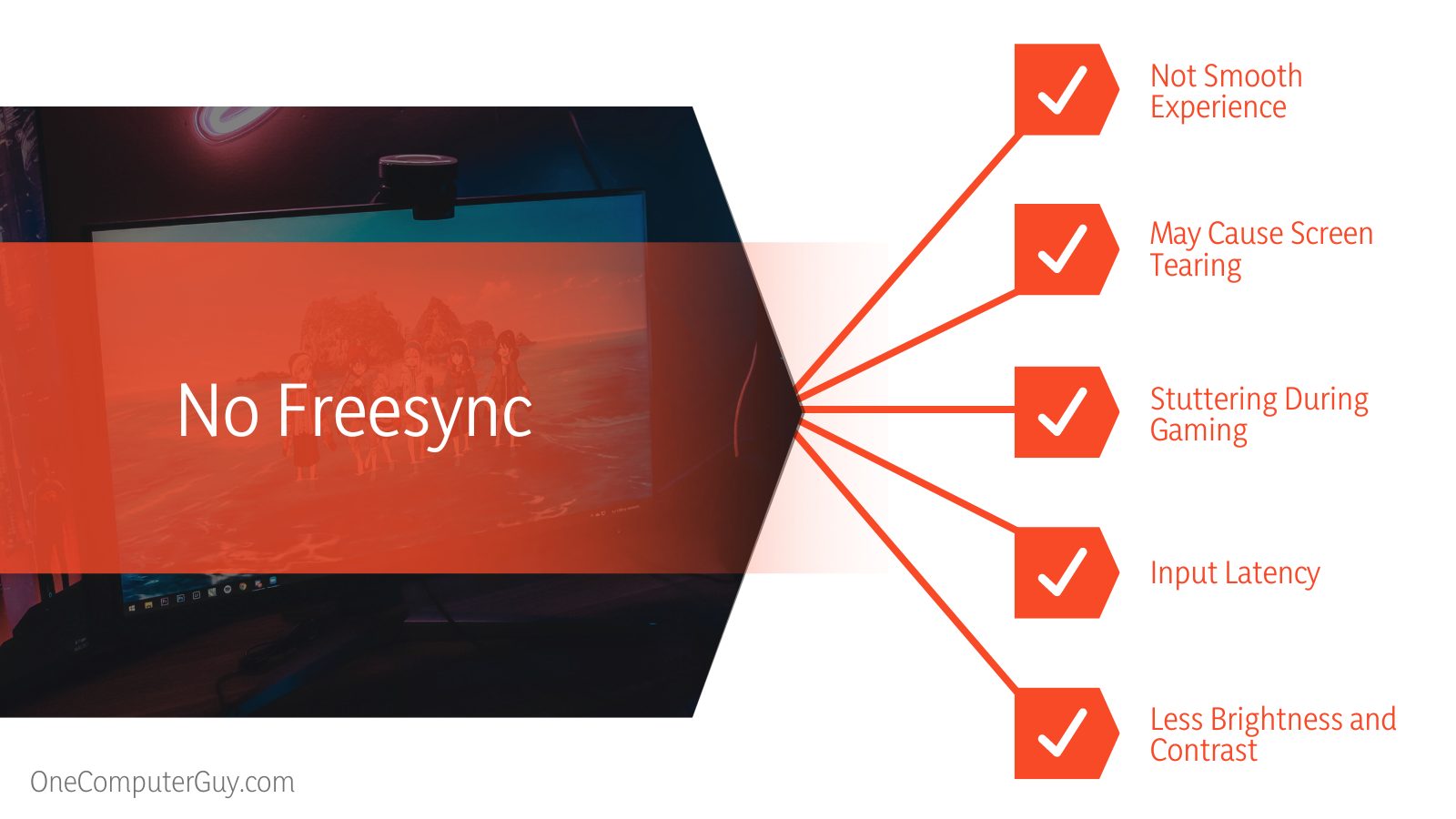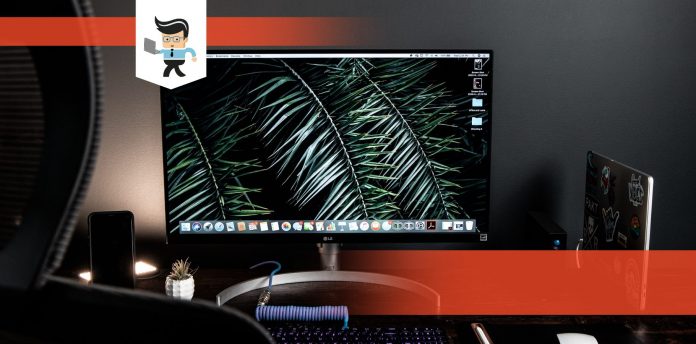In the battle of no Freesync vs Freesync, which side do our experts fall on? Many people have had this type of conversation over the years. Gamers will fall on both sides of the aisle on this one. We will try to remain somewhat impartial and explain both options’ benefits and which one, in the end, we’d choose.

First, however, you need to know what Freesync is and how to use it, including the technology behind it, problems it can cause, and whether to turn Freesync on or off. You should know about some of the alternative options you have now and which one will be the better option for you moving forward.
Contents
What Is Freesync?
FreeSync is an adaptive synchronization for LCDs. It helps to eliminate stuttering, juddering, and screen tearing when you have Freesynch turned on. It synchronizes the monitor’s refresh rate with the framerate of the GPU. Most people will never have problems with Freesync, but that isn’t always the case.
When you have a monitor that has Freesync, it will gain a variable refresh rate (known as VRR) that matches your AMD graphics card’s framerate. You get to optimize the framerate of your graphics card and get better performance, ideally.
Now that you know what Freesync is, let’s get into the nitty-gritty about whether it is worth it.
Is Freesync Worth It?
“Is Freesync worth it?” is an interesting question because it depends on why you use your computer. If you are a gamer, there are certainly more reasons to have Freesync than using your computer for social media browsing.

Certainly, FreeSync has some problems and some solutions.
FreeSync is cheaper than other options. For gamers, you need to have something to help with visuals. There are some alternatives out there that do the same thing, including NVIDIA’s G-Sync and the V-Sync options. However, FreeSync monitors are much cheaper.
Now, this is because FreeSync is used using open source development and is a software solution, which some people aren’t interested in using. G-Sync is hardware-based, which is something that many people prefer. This makes it more expensive.
FreeSync can’t be used with an NVIDIA Graphics Card. Sadly, you can’t use FreeSync with an NVIDIA graphics card, so you can’t game the system that way. FreeSync is only compatible with AMD graphics cards and nothing else, barring many people from actually using it. This isn’t something that only happens with FreeSync, and it is pretty much an industry standard.
It can be quite frustrating.
G-Sync, which is the best other option to compare it to, has tightly regulated monitors. They have to meet some very specific requirements to be put onto the market. When you buy a G-Sync monitor, you know what you are getting. When you buy a FreeSync monitor, you can’t always be sure what you’re getting.
How To Enable AMD FreeSync On Your Monitor
The first thing you need to do is ensure that you have the latest driver installed for AMD FreeSync. If you aren’t sure, you can look while you are in this menu. Once you have installed and enabled FreeSync, it should always stay on until you turn it off. To turn it on:
1. Open AMD Radeon Settings by right-clicking on your desktop and selecting it.
2. Confirm that the AMD FreeSync is turned on. You can also turn it off from this menu.
Once you’ve made changes, you can continue playing. There is no need to restart your computer. Some users have reported needing to enable and disable FreeSync occasionally if something is going wrong. Sometimes an update will automatically turn it off, and you will need to go through the steps again to turn it on.
Should I Keep FreeSync On If I Don’t Use It?
There is no reason to turn FreeSync off if you aren’t using it. There may be some strange situations in which it will help you, and there is no real reason to keep it off, as it isn’t preventing anything.

However, a word of note is to be sure that you read your user manual for any additional parts that you buy or programs that you download. If they compete with FreeSync or their performance is hindered by it in some way, then you may have a reason to turn it off or keep it on.
FreeSync Or No FreeSync? Our Conclusion
So is FreeSync worth it? Under the right circumstances and for the correct type of gamer, FreeSync will be worth it. Not only does it help to provide a better gameplay experience, but it can also keep your game running smoothly and prevent any issues.
If you already have an AMD GPU in your build, or you are looking into different options before you start a new build, then this is a great avenue to explore. It is undoubtedly cheaper, somewhat more comfortable to adjust, and there is more information available about it.
However, it would be best if you did some research before you buy a FreeSync monitor. If you are just determining between switching it on and off, you should try gaming with both and see which one works better.







